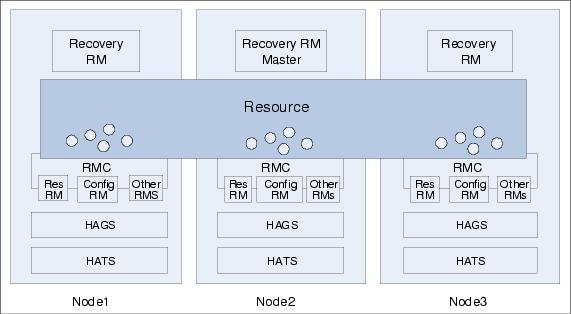4.2.1 Introduction
IBM Tivoli System Automation manages the availability of applications running in Linux systems or clusters on System x, zSeriesŪ, iSeriesŪ, pSeriesŪ, and AIX systems or clusters. It consists of the following features:
- High Availability and resource monitoring
TSA provides a High Availability environment. It offers mainframe-like High Availability by using fast detection of outages and sophisticated knowledge about application components and their relationships.
- Policy-based automation
TSA configures High Availability systems through the use of policies that define the relationships among the various components.
- Automatic recovery
TSA quickly and consistently performs an automatic restart of failed resources or entire applications either in place or on another system of a Linux or AIX cluster. This greatly reduces system outages.
- Automatic movement of applications
TSA manages the cluster-wide relationships among resources for which it is responsible.
- Resource grouping
You can group resources together in TSA. Once grouped, all relationships among the members of the group are established, such as location relationships, start and stop relationships, and so on.
Figure 4-1 is the architecture of Tivoli System Automation.

Figure 4-1 Architecture of Tivoli System Automation
TSA provides High Availability by automating resources, such as processes, applications, IP addresses, and others in Linux-based clusters. To automate an IT resource (for example, a DB2 database instance), you define the resource to TSA. Furthermore, these resources must all be contained in at least one resource group. If these resources are always required to be hosted on the same machine, they are placed in the same resource group. For more information about TSA, see the Tivoli Software Information Center at the following link:
http://publib.boulder.ibm.com/tividd/td/IBMTivoliSystemAutomationfor
Multiplatforms2.1.html
| xxxx |